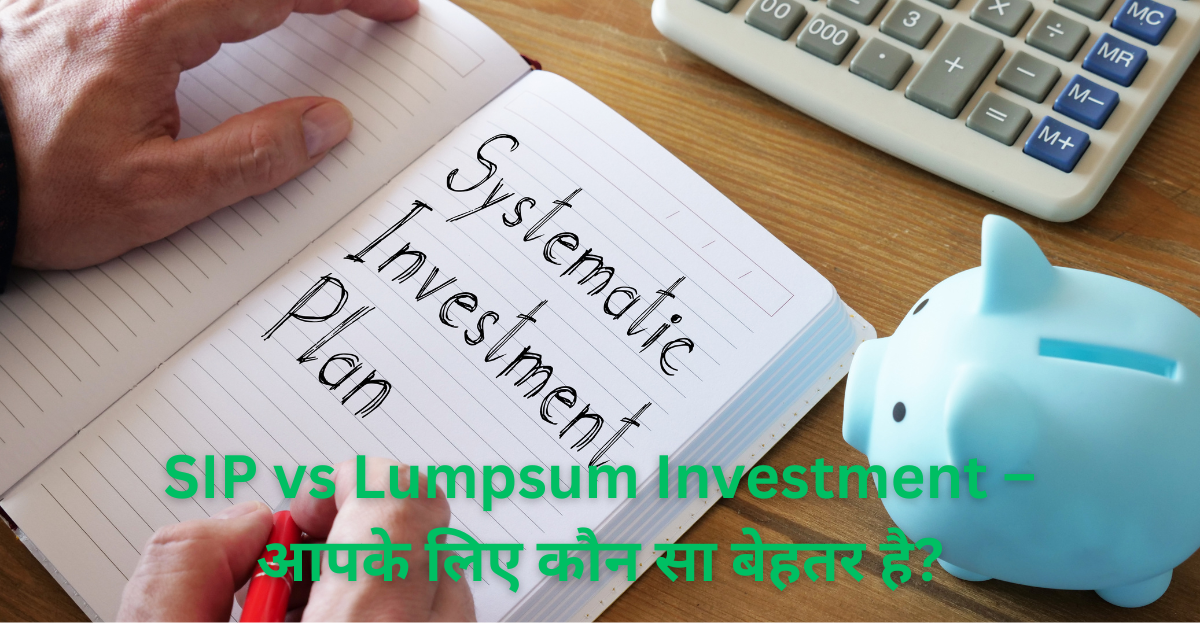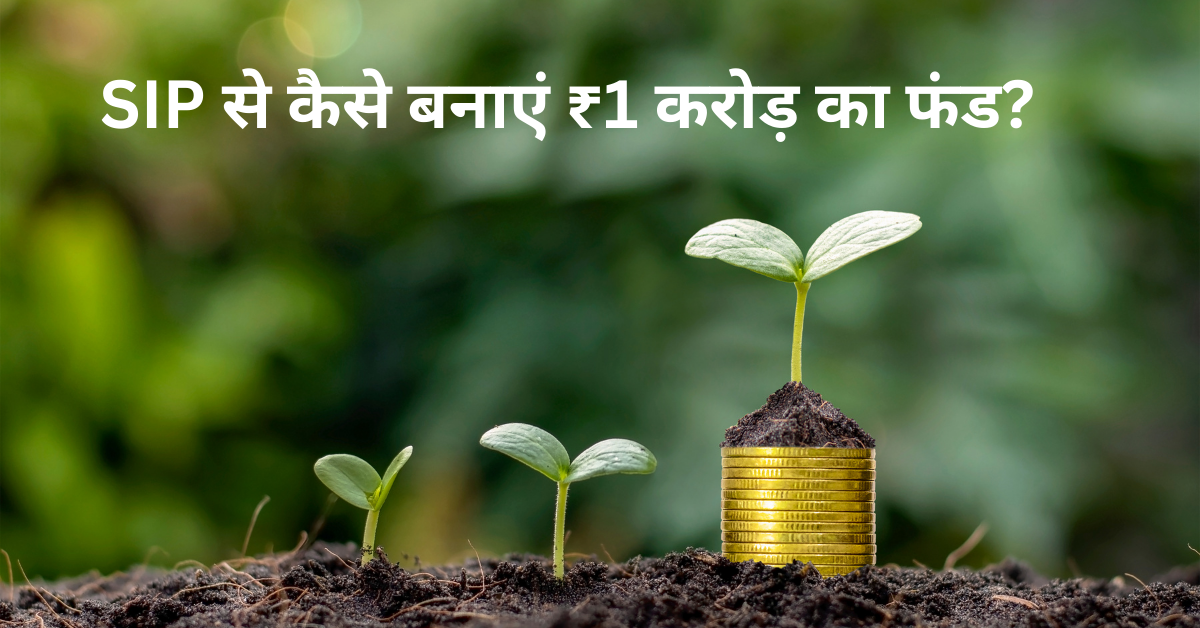SIP vs Lumpsum Investment – आपके लिए कौन सा बेहतर है?
Date
09 June 2025
/
Category
Mutual fund
निवेश की दुनिया में कदम रखते समय सबसे बड़ा सवाल यही होता है –
SIP करें या Lumpsum निवेश?
दोनों ही Mutual Fund निवेश के लोकप्रिय तरीके हैं, लेकिन आपकी आय, लक्ष्य और जोखिम क्षमता के आधार पर सही विकल्प अलग-अलग हो सकता है। इस लेख में हम विस्तार से समझेंगे कि SIP और Lumpsum में क्या अंतर है और आपके लिए कौन सा विकल्प बेहतर है।
SIP क्या है?
SIP (Systematic Investment Plan) एक ऐसी निवेश प्रक्रिया है जिसमें आप हर महीने एक निश्चित राशि म्यूचुअल फंड में निवेश करते हैं। यह निवेश ऑटोमैटिक तरीके से तय तारीख को होता है।
SIP की खासियत:
• छोटी राशि से शुरुआत
• नियमित निवेश
• मार्केट रिस्क औसत होता है
• Compounding का लाभ
• लॉन्ग टर्म वेल्थ क्रिएशन
Lumpsum Investment क्या है?
Lumpsum निवेश में आप एक बार में बड़ी राशि म्यूचुअल फंड में निवेश करते हैं। यह आमतौर पर बोनस, इंश्योरेंस मैच्योरिटी या सेविंग्स से किया जाता है।
Lumpsum की खासियत:
• एक बार में पूरा निवेश
• तेजी से रिटर्न की संभावना
• बाजार टाइमिंग का ज्यादा प्रभाव
• बड़े अमाउंट के लिए उपयुक्त
SIP vs Lumpsum – मुख्य अंतर
SIP
• हर महीने छोटी राशि
• रिस्क कम होता है
• Beginners के लिए बेहतर
• Disciplined Investment
• Long Term Wealth Growth
Lumpsum
• एक बार में बड़ी राशि
• रिस्क ज्यादा हो सकता है
• अनुभवी निवेशकों के लिए बेहतर
• Market Timing जरूरी
• Short to Medium Term के लिए उपयोगी
आपके लिए कौन सा बेहतर है?
SIP आपके लिए बेहतर है अगर:
• आपकी नियमित आय है
• आप निवेश में नए हैं
• आप कम जोखिम चाहते हैं
• आप लॉन्ग टर्म प्लान कर रहे हैं
• आप अनुशासन के साथ निवेश करना चाहते हैं
Lumpsum आपके लिए बेहतर है अगर:
• आपके पास एकमुश्त बड़ी राशि है
• आप बाजार की समझ रखते हैं
• आप शॉर्ट टर्म में ज्यादा रिटर्न चाहते हैं
• आप मार्केट टाइमिंग पर विश्वास करते हैं
रिटर्न के नजरिए से तुलना
SIP में:
• बाजार के उतार-चढ़ाव का असर कम होता है
• औसत लागत पर यूनिट मिलती हैं
• धीरे-धीरे स्थिर ग्रोथ मिलती है
Lumpsum में:
• अगर बाजार सही समय पर निवेश किया जाए तो ज्यादा रिटर्न मिल सकता है
• लेकिन गलत समय पर निवेश करने से नुकसान भी हो सकता है
Hybrid Strategy – दोनों का संतुलन
कई निवेशक SIP और Lumpsum दोनों का उपयोग करते हैं:
• नियमित आय से SIP
• अतिरिक्त धन से Lumpsum
यह रणनीति निवेश को संतुलित और सुरक्षित बनाती है।
Guide Us Investments आपकी कैसे मदद करता है?
Guide Us Investments आपकी जरूरत के अनुसार सही निवेश रणनीति तय करने में मदद करता है:
• SIP और Lumpsum Planning
• Risk Profiling
• Goal Based Investment Strategy
• Portfolio Monitoring
• Personalized Advisory
• Insurance + Investment Planning
हम आपको सही विकल्प चुनने में प्रोफेशनल मार्गदर्शन प्रदान करते हैं।
SIP vs Lumpsum – FAQ सेक्शन
प्रश्न: क्या SIP ज्यादा सुरक्षित है?
उत्तर: SIP बाजार जोखिम को समय के साथ औसत कर देती है, इसलिए इसे तुलनात्मक रूप से सुरक्षित माना जाता है।
प्रश्न: Lumpsum कब करना चाहिए?
उत्तर: जब बाजार गिरावट पर हो और आपके पास बड़ी राशि हो, तब Lumpsum फायदेमंद हो सकता है।
प्रश्न: Beginners के लिए कौन सा बेहतर है?
उत्तर: Beginners के लिए SIP सबसे उपयुक्त विकल्प होता है।
SEBI दिशानिर्देश अनुसार महत्वपूर्ण सूचना
म्यूचुअल फंड निवेश बाजार जोखिमों के अधीन होते हैं। निवेश करने से पहले सभी स्कीम संबंधित दस्तावेजों को ध्यानपूर्वक पढ़ना आवश्यक है। पिछला प्रदर्शन भविष्य के रिटर्न की गारंटी नहीं देता।
SIP और Lumpsum दोनों ही निवेश के तरीके बाजार की परिस्थितियों पर निर्भर करते हैं। Guide Us Investments केवल मार्गदर्शन प्रदान करता है, अंतिम निर्णय निवेशक की स्वयं की जिम्मेदारी है।
निष्कर्ष
SIP और Lumpsum दोनों के अपने फायदे हैं। सही विकल्प आपकी वित्तीय स्थिति, लक्ष्य और जोखिम सहनशीलता पर निर्भर करता है। यदि आप नियमित निवेश चाहते हैं तो SIP बेहतर है, और यदि आपके पास एकमुश्त बड़ी राशि है तो Lumpsum एक अच्छा विकल्प हो सकता है।
समझदारी यही है कि निवेश से पहले सही सलाह लें और रणनीति के साथ आगे बढ़ें।
अब निर्णय आपके हाथ में है – SIP या Lumpsum?
Guide Us Investments के साथ पाएं फ्री फाइनेंशियल कंसल्टेशन और जानें आपके लिए कौन सा निवेश बेहतर है।
👉 आज ही संपर्क करें और अपने पैसों को सही दिशा दें
आपका स्मार्ट निवेश, आपके सुरक्षित भविष्य की नींव है।
📞 संपर्क करें
Guide Us Investments
Website: https://guideusinvestments.com
Call / WhatsApp: +91 8655139309
Email: guideusinvestments@gmail.com
डिस्क्लोज़र:-
Mutual Fund investments are subject to market risks. Read all scheme related documents carefully before investing. Past performance is not indicative of future returns. SIP returns are not guaranteed and may vary based on market conditions. Guide Us Investments does not assure or guarantee any return or performance.




